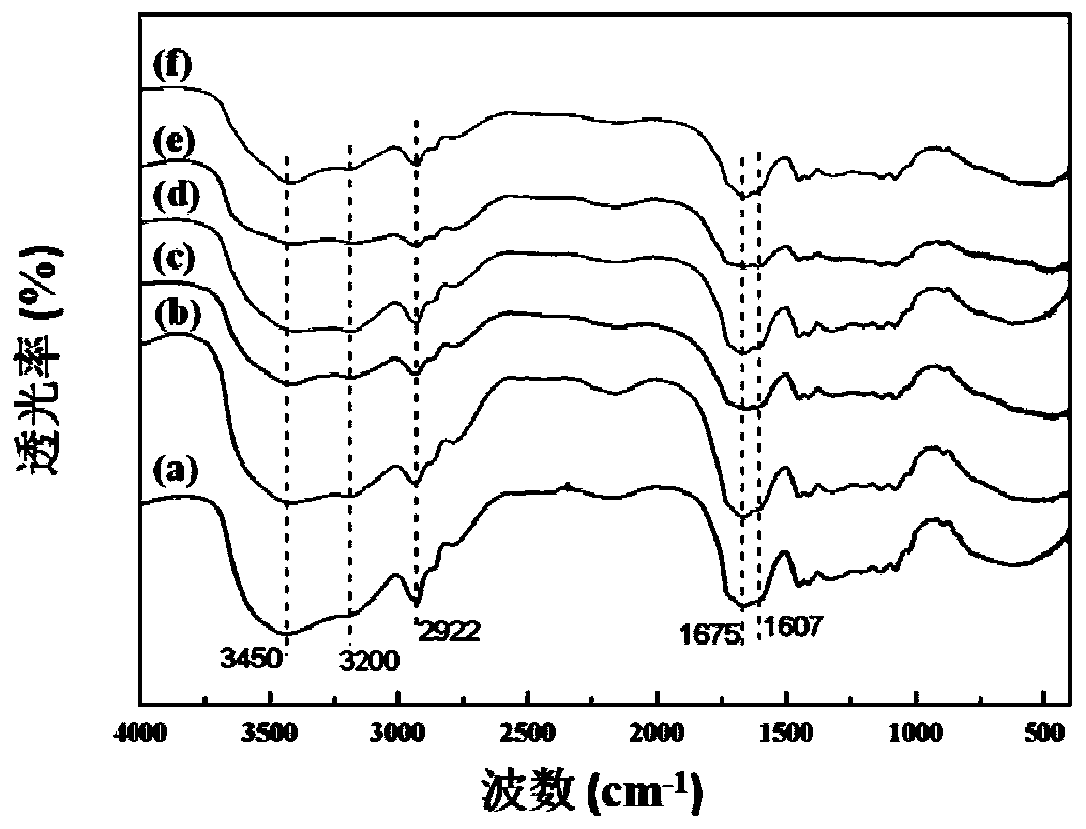Hydrogel adhesive capable of being repeatedly used and not damaging surface of substrate, and preparation method and application of hydrogel adhesive
A technology of hydrogel glue and substrate surface, applied in the direction of adhesives, adhesive types, polyurea/polyurethane adhesives, etc., can solve problems such as weak adhesive force, difficult to remove, and damage substrates, and achieve The effect of increasing durability
- Summary
- Abstract
- Description
- Claims
- Application Information
AI Technical Summary
Problems solved by technology
Method used
Image
Examples
Embodiment 1
[0038] Embodiment 1: the synthesis of hydrogel adhesive
[0039] Mix 10 g of acrylamide, 4 g of hydroxyethyl methacrylate, 30 g of water, 0 μL of HT acetone solution (0.04 g / mL acetone solution), 0.1 g of ammonium persulfate, and 5 μL of tetramethylethylenediamine (TEMED) to obtain a hydrogel Glue the solution of the adhesive, and then pour it into the mold to undergo free radical polymerization to form a hydrogel. The free radical polymerization conditions are: 90 ° C for 3 minutes, followed by sufficient polymerization at room temperature for 2 hours. The water content of the obtained hydrogel adhesive was 68.2%.
Embodiment 2
[0041] Mix 10 g of acrylamide, 4 g of hydroxyethyl methacrylate, 30 g of water, 20 μL of HT acetone solution (0.04 g / mL acetone solution), 0.1 g of ammonium persulfate, and 5 μL of tetramethylethylenediamine (TEMED) to obtain a hydrogel Glue the solution of the adhesive, and then pour it into the mold to undergo free radical polymerization to form a hydrogel. The free radical polymerization conditions are: 90 ° C for 3 minutes, followed by sufficient polymerization at room temperature for 2 hours. The water content of the obtained hydrogel adhesive was 68.2%.
Embodiment 3
[0043] Mix 10 g of acrylamide, 4 g of hydroxyethyl methacrylate, 30 g of water, 40 μL of HT acetone solution (0.04 g / mL acetone solution), 0.1 g of ammonium persulfate, and 5 μL of tetramethylethylenediamine (TEMED) to obtain a hydrogel Glue the solution of the adhesive, and then pour it into the mold to undergo free radical polymerization to form a hydrogel. The free radical polymerization conditions are: 90 ° C for 3 minutes, followed by sufficient polymerization at room temperature for 2 hours. The water content of the obtained hydrogel adhesive was 68.2%.
PUM
| Property | Measurement | Unit |
|---|---|---|
| Shear strength | aaaaa | aaaaa |
Abstract
Description
Claims
Application Information
 Login to View More
Login to View More - R&D
- Intellectual Property
- Life Sciences
- Materials
- Tech Scout
- Unparalleled Data Quality
- Higher Quality Content
- 60% Fewer Hallucinations
Browse by: Latest US Patents, China's latest patents, Technical Efficacy Thesaurus, Application Domain, Technology Topic, Popular Technical Reports.
© 2025 PatSnap. All rights reserved.Legal|Privacy policy|Modern Slavery Act Transparency Statement|Sitemap|About US| Contact US: help@patsnap.com



